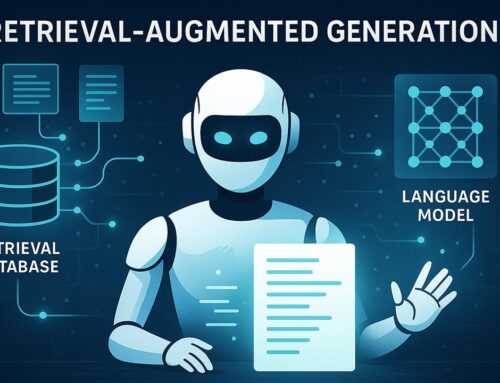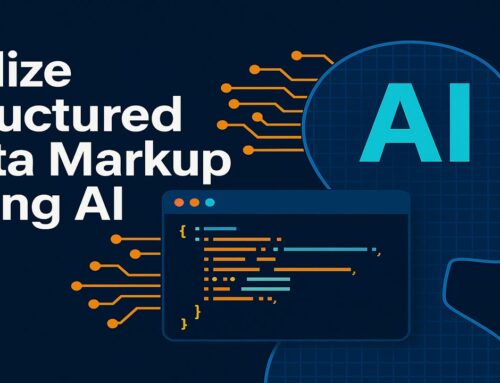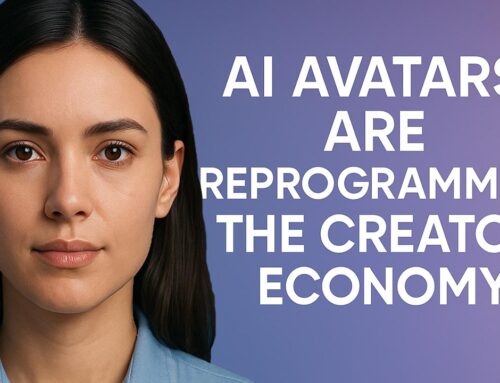AI Content Developer Business Model
Artificial Intelligence (AI) is transforming how content is created, distributed, and consumed. In fact, a recent survey found that 82% of marketers believe AI will significantly impact content creation within the next five years. Businesses today are leaning into AI to develop content at scale, enhance productivity, and stay competitive in an increasingly digital landscape. The AI Content Developer Business Model is emerging as a robust solution for organizations looking to streamline content production while maintaining quality and relevance.
According to a recent study, 82% of marketers believe that AI will significantly impact content creation within the next five years. This article explores the AI Content Developer Business Model, highlighting its core components, revenue opportunities, challenges, and potential for growth in the content creation industry.
Table of Contents
- Understanding AI Content Development
- AI Content Developer Business Model
- Key Components of a Successful AI Content Development Business
- Challenges and Opportunities
- Top 5 Frequently Asked Questions
- Final Thoughts
- Resources
Understanding AI Content Development
What is AI Content Development?
AI Content Development refers to using artificial intelligence technologies to generate, curate, and manage content across various platforms. This includes blog posts, social media updates, reports, marketing materials, and more. AI algorithms analyze data, learn from user preferences, and generate content that is tailored to meet specific audience needs.
Natural Language Processing (NLP) and Machine Learning (ML) are two fundamental AI technologies that enable the creation of human-like content. NLP helps the AI understand context, tone, and language, while ML algorithms help it learn from data inputs, making the generated content more relevant and targeted.
For example, companies like Forbes use AI tools such as Bertie to assist their writers in content creation, improving efficiency while maintaining quality.
Benefits of AI Content Development
AI Content Development offers several key benefits:
- Scalability: AI tools can create content at scale, producing multiple articles in minutes. This is particularly beneficial for businesses looking to increase their digital footprint.
- Cost Efficiency: Reducing the need for large teams of writers helps cut operational costs. According to Gartner, businesses can save up to 30% on content production costs by using AI.
- Consistency: AI ensures content adheres to brand guidelines and tone, maintaining consistency across platforms.
- Data-Driven Personalization: AI can personalize content for different audience segments, increasing engagement and conversion rates. For instance, Netflix uses AI to generate personalized recommendations, enhancing user engagement.
The AI Content Developer Business Model
The AI Content Developer Business Model is built around leveraging AI to provide content creation services, primarily focusing on scalability and quality. This business model has three major components: revenue streams, target audience, and operational framework.
To better understand how this model works in practice, let’s break down each component into more detailed steps:
- Revenue Streams: Start by identifying potential revenue streams, such as subscription services, pay-per-content models, and white-label solutions. For example, consider a company that offers tiered subscription plans to clients based on their content needs, with higher tiers offering more customization and exclusive features.
- Target Audience: Define and segment your target audience. This could include digital marketing agencies, SMEs, and content publishers. For instance, a digital marketing agency might use AI-generated content to quickly fulfill client demands, while SMEs might opt for AI-generated product descriptions to enhance their e-commerce sites.
- Operational Framework: Develop an operational framework that outlines how AI tools are integrated, the role of human editors, and the client onboarding process. For example, an AI-generated content piece might go through initial automated creation, followed by human editing to ensure quality and brand consistency, before being delivered to the client.
By breaking down each component into actionable steps, the business model becomes more tangible and easier to implement for aspiring AI content developers.
Revenue Streams
The revenue streams for an AI content development business can be diverse and depend on the services offered:
- Subscription Services: Many businesses prefer a subscription model, where clients pay a recurring fee to access AI-generated content. Subscription tiers can be based on the volume of content, quality, or customization options. This model provides predictable revenue and scalability.
- Pay-Per-Content: Clients can opt for a pay-per-article or pay-per-project model, which is especially attractive for smaller businesses needing occasional content. However, this model may lead to fluctuating income compared to subscriptions.
- White-Label Solutions: Providing white-label AI-generated content for marketing agencies allows them to sell content under their brand. This approach offers an additional revenue stream without direct client interactions.
- API Access: Offering API access to the AI content generation platform can allow developers and companies to integrate AI content development into their existing workflow, generating additional revenue. This is ideal for tech-savvy clients looking to automate their processes.
Target Audience
The target audience for AI content developers includes:
- Digital Marketing Agencies: Agencies often need high volumes of content for clients and benefit from the scalability AI content creation provides. For example, Hootsuite uses AI to schedule and generate social media content for clients.
- Small and Medium-Sized Enterprises (SMEs): SMEs that lack extensive marketing budgets can use AI-generated content to maintain a consistent online presence. A small e-commerce business, for instance, can use AI tools to generate product descriptions efficiently.
- Content Publishers: Websites and blogs requiring constant content updates can use AI to keep up with demand. BuzzFeed has used AI to generate quizzes and articles to engage readers consistently.
Operational Framework
An AI content development business requires a robust operational framework involving technology, human expertise, and streamlined processes:
- AI Platform Development: This involves building or licensing a platform for content generation. The platform should incorporate NLP and ML technologies for contextual and audience-specific content.
- Editing and Human Oversight: Human editors are essential to ensure quality and maintain brand voice. They review and refine AI-generated content. For example, The Washington Post’s AI tool, Heliograf, is overseen by human editors to ensure quality journalism.
- Client Onboarding and Management: Efficient onboarding and content management are crucial for client satisfaction. AI tools that offer easy integration with client systems help in enhancing service delivery.
Consider adding a flowchart to visually represent the operational workflow, from AI content generation to human editing and client delivery, to make this section more digestible.
Key Components of a Successful AI Content Development Business
Technology Stack
A comprehensive technology stack is fundamental to an AI content development business. Key components include:
- Natural Language Processing (NLP): Used for understanding and processing human language, enabling the creation of content that reads naturally. Tools like OpenAI’s GPT-4 are commonly used for this purpose.
- Machine Learning (ML): Helps AI models improve over time, making content increasingly relevant to target audiences. TensorFlow and PyTorch are popular frameworks used in this space.
- Cloud Infrastructure: Supports scalability and high availability of AI models, ensuring seamless content production. Amazon Web Services (AWS) and Microsoft Azure are popular choices for hosting AI models.
Human Oversight and Editing
AI, while powerful, still requires human oversight. The role of human editors includes fact-checking, adding brand-specific nuances, and ensuring that the content aligns with ethical guidelines. Editors also help refine the AI model by providing feedback, which contributes to continuous learning.
Adding specific examples of companies employing human oversight, such as The New York Times, which uses AI-assisted tools but relies on experienced editors, can provide a practical perspective.
Compliance and Ethical Considerations
Compliance and ethics are critical for AI content developers:
- Copyright Compliance: Ensuring that generated content does not infringe on copyrights or include plagiarized material.
- Bias Prevention: AI models must be trained with diverse datasets to minimize biases and produce inclusive content. Microsoft, for example, has initiatives to ensure responsible AI use by reducing bias in training datasets.
- Transparency: Businesses must inform their clients and end-users when content is AI-generated to maintain transparency.
Challenges and Opportunities
Challenges in AI Content Development
- Quality Control: Despite advances, AI-generated content can lack the nuance or creativity of human writers. Ensuring consistent quality remains a challenge. For instance, CNET faced backlash for inaccuracies in AI-generated articles, highlighting the need for stringent quality checks.
- Ethical Concerns: AI content can sometimes unintentionally perpetuate biases or misinformation, which needs to be vigilantly monitored. Facebook’s AI, for example, has faced challenges in preventing the spread of biased content.
- Client Trust: Convincing potential clients of the value and quality of AI-generated content requires time and effective marketing. Demonstrating successful case studies can help build trust.
Opportunities for Growth
- Integration with Other Technologies: Combining AI with other innovations, such as voice assistants and chatbots, offers opportunities to diversify offerings. For example, integrating AI content with Amazon Alexa skills can create dynamic user experiences.
- New Content Formats: AI can generate interactive and multimedia content, expanding beyond text to include videos, infographics, and dynamic visualizations. According to Statista, video content is expected to make up 82% of all consumer internet traffic by 2025, providing a significant opportunity for AI content developers.
- Market Expansion: As businesses become more digital, the demand for scalable content solutions will continue to grow, creating opportunities for AI content developers to capture new markets. Research by MarketsandMarkets suggests that the AI content creation market is expected to grow at a CAGR of 17.8% from 2023 to 2030.
Top 5 Frequently Asked Questions
Final Thoughts
The AI Content Developer Business Model is redefining how content is created and consumed in the digital age. By leveraging cutting-edge AI technologies, businesses can scale content production, reduce costs, and maintain consistency across platforms. To succeed, businesses should focus on the following key actionable steps:
- Integrate Human Oversight: Ensure human editors are involved in the review process to maintain quality, creativity, and brand alignment.
- Embrace Ethical Practices: Stay transparent about AI use and minimize biases by training models on diverse datasets.
- Continuously Innovate: Adapt to new AI technologies and content formats to stay ahead of market trends.
Looking ahead, the future of AI content development is promising, with continued advancements in natural language understanding and personalization. Content developers who effectively balance AI efficiency with human creativity will be well-positioned to lead in this evolving landscape, delivering effective, engaging, and ethical content solutions for diverse industries.
To succeed, content developers must focus on integrating human creativity with AI efficiency, maintaining ethical standards, and continuously innovating to adapt to evolving market demands.
- OpenAI – Natural Language Processing
- IBM Watson – AI Content Creation Tools
- Gartner – AI Cost Efficiency Study
- Statista – Video Content Statistics
- MarketsandMarkets – AI Content Creation Market Report
- HubSpot – AI in Content Marketing
- Forbes – The Future of AI in Content Creation









Leave A Comment